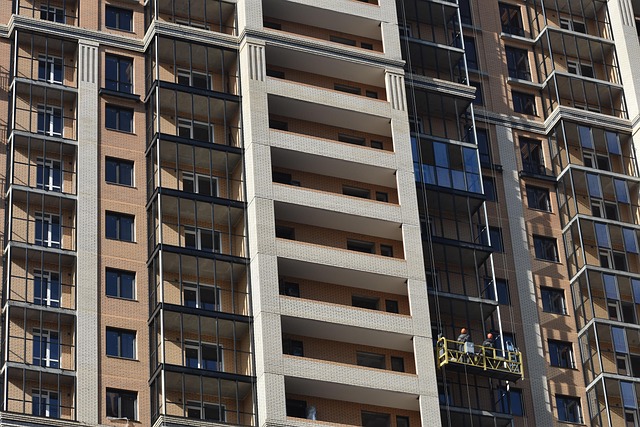
The Relationship Between Real Estate Investing and Economic Cycles
Real estate investing is a tumultuous journey characterized by opportunities for wealth accumulation, but it is also strongly influenced by the broader economic cycles. Understanding the connection between economic cycles and real estate dynamics is essential for investors looking to navigate this intricate landscape successfully. This article delves into the nature of economic cycles, the various phases they entail, and how these phases affect real estate investment opportunities and strategies.
Understanding Economic Cycles
Economic cycles, often referred to as business cycles, are the fluctuations in economic activity that occur over time within an economy. These cycles are characterized by periods of expansion and contraction, commonly divided into four main phases: expansion, peak, contraction, and trough.
During the expansion phase, the economy experiences increasing productivity, consumer spending, and positive consumer sentiment. This phase often results in job creation and rising incomes, which bolster the demand for homes and commercial properties.
The peak phase occurs when economic activity reaches its highest point. Although this phase may seem favorable, it often implies that the economy is nearing its limits, leading to potential overvaluation in asset prices, including real estate.
In the subsequent contraction phase, the economy enters a downturn, characterized by decreased consumer spending, higher unemployment, and lower business investments. As a result, demand for real estate usually diminishes, leading to potential price corrections and increased vacancies in rental properties.
Finally, the trough phase represents the lowest point of the economic cycle, where economic activity begins to stabilize. This period presents significant opportunities for real estate investors willing to capitalize on undervalued properties and favorable deals.
The Expansion Phase and Real Estate Investing
During the expansion phase, real estate investing often thrives. Lower unemployment leads to increased spending power for consumers, translating to higher demand for residential properties. In commercial real estate, businesses expand, creating higher demand for office spaces, retail locations, and industrial properties.
Real estate values typically appreciate during this phase, making it a favorable time for investors to enter the market for several reasons:
- Increased Property Values: With rising demand, property prices generally increase. Investors can benefit from capital appreciation as the value of their properties rises.
- Rising Rental Yields: Increased demand for housing leads to higher rental rates. Investors in rental properties often see impressive cash flow, enhancing their financial returns.
- Access to Financing: Lenders are more willing to extend credit during expansion, providing easier access to financing for real estate purchases. Competitive interest rates often enable investors to secure attractive lending terms, enhancing their investment potential.
The Peak Phase and Its Implications
The peak phase can be a double-edged sword for real estate investors. While the economic climate remains robust, the risks of entering the market at this stage can be high. Prices may be inflated due to buyer enthusiasm and speculative investments, which can result in a market correction when the cycle shifts.
Investors must exercise caution during this phase. Indicators of an impending peak can include skyrocketing demand, soaring property prices relative to historical norms, and tightening lending standards as banks brace for potential economic slowdown.
Strategies for this phase include:
- Market Timing: Savvy investors may opt to sell properties before a downturn, cashing in on appreciated values while the market is still favorable.
- Diversification: Expanding into different markets or property types can mitigate risks associated with local market corrections.
- Value Analysis: Investors might focus on identifying properties with inherent value or renovation potential that can withstand market shifts.
Contraction Phase: A Time for Strategic reevaluation
As the economy transitions into the contraction phase, real estate demand typically dwindles. Consumers cut back on spending, and potential homebuyers become hesitant due to uncertainty. This phase often results in declining property values, making it crucial for real estate investors to adjust their strategies.
While this phase poses many challenges, it can also present extensive opportunities for those who perceive the market shift:
- Buying Opportunities: Lower property prices can allow investors to purchase properties at a discount, setting the groundwork for future capital appreciation once the economy recovers.
- Negotiation Leverage: With reduced competition, buyers hold greater negotiating power, enabling them to secure favorable terms and pricing.
- Focus on Cash Flow: Investors may be more inclined to prioritize cash flow rather than capital appreciation, adjusting their portfolios to benefit from stable rental income despite falling property values.
The Trough Phase: Seizing the Moment
The trough phase presents one of the best opportunities for real estate investors. As the economy begins to stabilize, savvy investors can capitalize on significant discounts as properties remain undervalued due to lingering market pessimism.
During the trough, several strategies can enhance investment outcomes:
- Long-Term Investments: Investors should focus on the long-term potential of properties, ensuring they can weather short-term fluctuations and benefit from future appreciation.
- Entry-Level Investment: Beginner investors may find the trough a suitable time for entry into the market, as they can acquire properties at lower prices without the initial risk of overvaluation.
- Sector Focus: Market sectors that tend to recover faster than others, such as residential rentals, may be particularly attractive during this phase.
Adapting Strategies for Different Economic Phases
The dynamic nature of economic cycles necessitates flexible approaches in real estate investing. Investors must continually assess the economic landscape and adjust their strategies accordingly. This adaptability can drastically influence long-term performance and risk management. Here are several guidelines for adapting strategies across different economic cycles:
- Market Research: Continually evaluate economic indicators such as GDP growth, inflation rates, and employment metrics to inform investment decisions.
- Networking and Collaboration: Building strong relationships within the real estate community can provide valuable insights and opportunities that may not be readily available in the public domain.
- Risk Mitigation: Diversification across geographical markets and property types can help ensure that all investment bases are covered, particularly in challenging economic times.
Conclusion
The relationship between real estate investing and economic cycles is complex yet vital for understanding the mechanisms that drive the market. Knowledge of economic cycles enables investors to make informed decisions that enhance their potential for success. Navigating through the phases of expansion, peak, contraction, and trough requires both strategic foresight and adaptability. By aligning their investment strategies with the current economic landscape, investors can optimize their portfolios and mitigate risks, ultimately achieving their financial goals.
Real estate investment, therefore, is not just about properties; it’s greatly influenced by the ebb and flow of the economy. The prudent investor recognizes this connection and employs strategies to leverage each phase of the economic cycle for maximum return potential.


